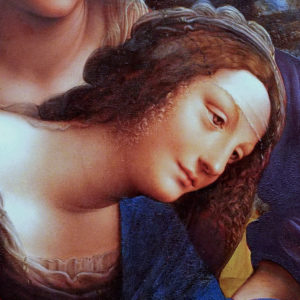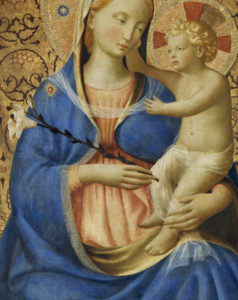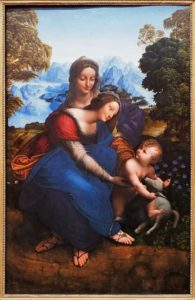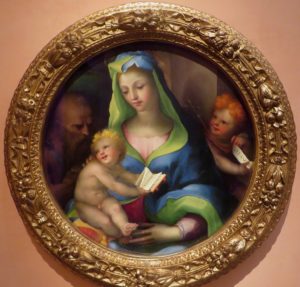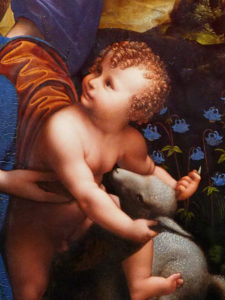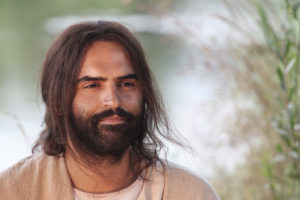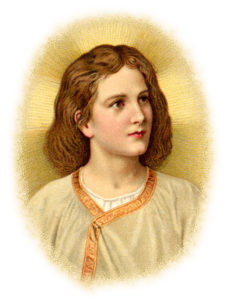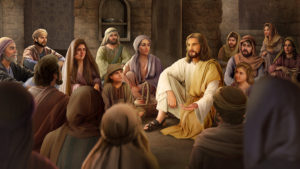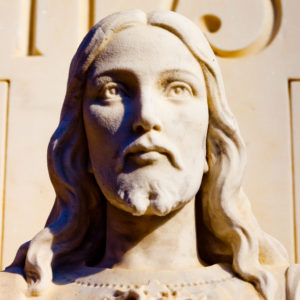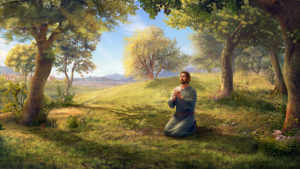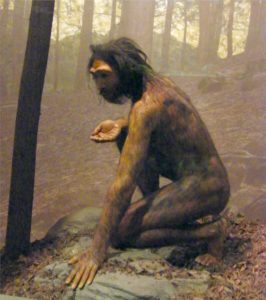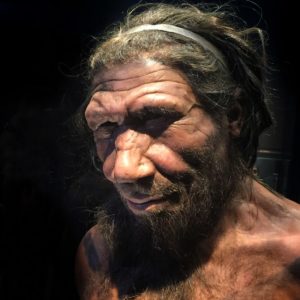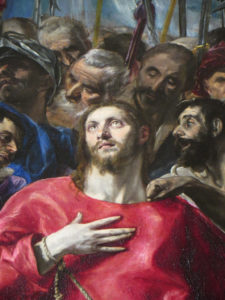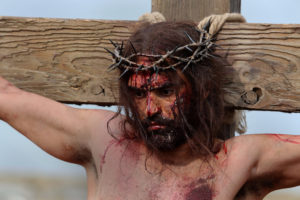The road is long, with many a winding turn
That leads us to who knows where, who knows when.
But I’m strong, strong enough to carry him.
He ain’t heavy. He’s my brother.
– Bobby Scott (1937-1990) & Bob Russell (1914-1970), from “He Ain’t Heavy, He’s My Brother” (1969)
 If people were nothing more than different aspects of one group consciousness, then for a significant number of us to work at raising our consciousness vibrations would be pretty much all it would take for us to start to bring the kingdom of God on earth. But in fact, each of us is a complex individual who is living as a limited aspect of a much greater eternal Mind, and we are strongly influenced by the restrictions of these material bodies. While we are on earth, we have a lot going on! That being the case, there are concepts beyond the overarching goals of gratitude, forgiveness, and love that we will need to better understand if we hope to make optimum spiritual progress in this lifetime, and if we ever hope to much improve the world. This is the first of four reflections on topics that are likely at first to seem less than crucial. Please bear with me on this. We have a world to save!
If people were nothing more than different aspects of one group consciousness, then for a significant number of us to work at raising our consciousness vibrations would be pretty much all it would take for us to start to bring the kingdom of God on earth. But in fact, each of us is a complex individual who is living as a limited aspect of a much greater eternal Mind, and we are strongly influenced by the restrictions of these material bodies. While we are on earth, we have a lot going on! That being the case, there are concepts beyond the overarching goals of gratitude, forgiveness, and love that we will need to better understand if we hope to make optimum spiritual progress in this lifetime, and if we ever hope to much improve the world. This is the first of four reflections on topics that are likely at first to seem less than crucial. Please bear with me on this. We have a world to save!
We all think we know what love is. We love our life-partners. Our children. Our friends. Our pets. We imagine that just spreading those happy feelings to others beyond our personal circle must be what Jesus means when He tells us we must love our neighbors as ourselves (MT 19:19). We assume that once we have sufficiently raised our personal consciousness vibrations, we will just naturally love everyone! Sadly, though, it is not that simple.
What we refer to as love is actually many different warm emotions. In English, and also in the Aramaic that Jesus spoke, there is just one word for love; but ancient Greek is the language into which the words of Jesus were first translated, and there we find six handy words for love:
- Philautia means love for oneself.
- Pragma means longstanding love.
- Eros means sexual or romantic love.
- Philia means deep and close friendship.
- Ludus means light and playful affinity.
- Agape means genuine universal love.
 The kind of love that Jesus wants us to cultivate is, of course, agape; and this sort of love for everyone really doesn’t just come naturally. How can we love everyone on earth when there are more than seven billion of us and we will meet no more than maybe a few thousand people in our entire lives? To love everyone, we will need to find ways to come to see all the billions of people that we will never lay eyes on as very much like the ones that we love, and also much like ourselves. If we think we can just spontaneously feel real love for strangers who look and act peculiar to us and speak an unfamiliar language, then we are kidding ourselves.
The kind of love that Jesus wants us to cultivate is, of course, agape; and this sort of love for everyone really doesn’t just come naturally. How can we love everyone on earth when there are more than seven billion of us and we will meet no more than maybe a few thousand people in our entire lives? To love everyone, we will need to find ways to come to see all the billions of people that we will never lay eyes on as very much like the ones that we love, and also much like ourselves. If we think we can just spontaneously feel real love for strangers who look and act peculiar to us and speak an unfamiliar language, then we are kidding ourselves.
What we are being called to discover in everyone on earth is our innate shared humanity. So loving our neighbors requires that we cultivate empathy, which is the ability to understand and share the feelings of others. Empathy is different from compassion. We all can feel compassion for someone who is suffering, but we can feel real empathy only for those that we perceive to be pretty much like ourselves. Among other things, empathy requires that we realize and accept the fact that other people might reasonably see things differently than we do.
My husband of forty-seven years has Asperger Syndrome (we’ll refer to it here as “AS”). AS is on the autism spectrum, but many who have it are very high-functioning and even brilliant people. If you met my love, you would just find him to be a bit on the shy side. But most AS people share one confounding trait: they are unable to empathize with others. I learned this early in my marriage, when I might be crying and raging at him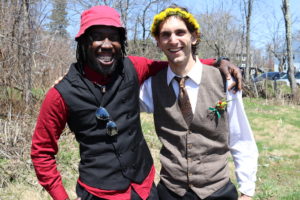 while he looked at me with bewildered concern. It was a turning point when I realized that if something was not important to him he was unable to imagine why it bothered me. Having AS is not the only reason why someone might find it hard to empathize, but it is a useful reminder of the fact that there are good reasons why we cannot expect people whose minds are influenced by being in material bodies to nevertheless rise above the limitations of those bodies and conceive a universal love for humankind. Another high-functioning AS person was apparently Thomas Jefferson. The trait is shed when we leave our bodies, so Thomas is not an AS person now; and in fact, he can read people’s motivations a great deal better than I can. But I think it was Jefferson’s inability to imagine living with a slave’s limitations that made him unable despite much effort to come up with a workable emancipation plan.
while he looked at me with bewildered concern. It was a turning point when I realized that if something was not important to him he was unable to imagine why it bothered me. Having AS is not the only reason why someone might find it hard to empathize, but it is a useful reminder of the fact that there are good reasons why we cannot expect people whose minds are influenced by being in material bodies to nevertheless rise above the limitations of those bodies and conceive a universal love for humankind. Another high-functioning AS person was apparently Thomas Jefferson. The trait is shed when we leave our bodies, so Thomas is not an AS person now; and in fact, he can read people’s motivations a great deal better than I can. But I think it was Jefferson’s inability to imagine living with a slave’s limitations that made him unable despite much effort to come up with a workable emancipation plan.
I have spent the past decade trying to raise my personal consciousness vibration away from fear and toward more perfect love using the Gospel teachings of Jesus. Within a few months I made three discoveries:
- Completely forgiving is easiest if you teach yourself never to be bothered in the first place. I came to call it prevenient forgiveness. Suffering a wrong, becoming upset about it, then wrestling down our irritation and forcing ourselves to completely forgive it is much too difficult.
- The process of learning prevenient forgiveness turns out to be
 surprisingly mechanical. Once you have taught your lazy mind never to see anything as a threat, you will no longer suffer any genuine anger, not even over awful life-changing events.
surprisingly mechanical. Once you have taught your lazy mind never to see anything as a threat, you will no longer suffer any genuine anger, not even over awful life-changing events. - As your mind becomes more peaceful, your warmth toward others begins to rise. Within three months of my first beginning an active prevenient forgiveness practice, I realized I was developing an incipient tenderness toward strangers on the street that was easy to begin to build into a dawning universal love. Learning to love seven billion people is a whole lot easier once we have cleared our minds of the tendency to cultivate all the petty angers that we ourselves have taught our minds to breed!
It turns out that for most of us there is a warm fellow-feeling already there, beneath all our ego-based and self-programmed annoyance triggers. When Jesus tells us to love our neighbors as ourselves, He is urging us to uncover and resume what is in fact a strong natural affinity for other people. And our need to pursue the rediscovery of that affinity is one reason why Jesus requires us to forgive the wrongs that we suffer even seventy times seven times (MT 18:22), no matter what others might do to us. As we work at closely following the teachings of Jesus, we come more and more to see the practical sense of those teachings, and how powerful they are! But we still must reckon with the eccentricities of these material bodies. And a man who can perplexedly watch the woman he loves weep with rage because what bothers her wouldn’t bother him is not someone who can naturally empathize. A man who hated the system of slavery and loved the slaves who were his family members, but who nevertheless was unable to see that the dullness and submissiveness of slaves did not reflect who they actually were had no way to imagine a path to emancipation that would not end in racial strife.
So, are we at an impasse here? If cultivating a strong sense of empathy is essential  to our learning to love our neighbors as ourselves, and if for some people a lack of empathy is as disabling a trait as a missing limb, do we now need to sadly report to Jesus that His ambitions for us exceed humanity’s grasp? And even some people not born with traits on the autism spectrum might have trouble feeling an appropriate level of empathy. They might have suffered childhood abuse, or else they might be sociopathic. What now?
to our learning to love our neighbors as ourselves, and if for some people a lack of empathy is as disabling a trait as a missing limb, do we now need to sadly report to Jesus that His ambitions for us exceed humanity’s grasp? And even some people not born with traits on the autism spectrum might have trouble feeling an appropriate level of empathy. They might have suffered childhood abuse, or else they might be sociopathic. What now?
Our first task, of course, is to accept the fact that when it comes to our universal need to grow spiritually on an individual level, some people are going to find it harder than others. Yet this is a contest that all of us are going to have to win together, or humankind as a species will fatally fail! Of course, the fact that all our minds are part of one Mind much improves our odds because it means that even a small minority who are very good at skills like empathy can carry the rest of us a lot of the way. And apparently we can come to better understand how to be empathetic. Some are even sure that empathy is a skill that can be taught.
A few more of these complications are probably awaiting us as we work together to master and use the keys to rapid spiritual growth, which means three things:
- We must redouble our own efforts to grow spiritually so we can help to raise humanity’s consciousness vibrations for those who find their individual growth more difficult to achieve;
- We must keep looking for obstacles that might spiritually trip up some of us; and
- We must never forget that there is no one who is unworthy of our love.
 People with spiritual impairments that are related to their material bodies still are capable of spiritual growth. We just might need to help them a bit. And we can do that! Humanity is all one Mind, so we can carry those who need our help over their own particular rough spots. Jesus assures us that we can bring the kingdom of God on earth. He believes in us. So we can do this! And then for every one of us there will be only love, forevermore.
People with spiritual impairments that are related to their material bodies still are capable of spiritual growth. We just might need to help them a bit. And we can do that! Humanity is all one Mind, so we can carry those who need our help over their own particular rough spots. Jesus assures us that we can bring the kingdom of God on earth. He believes in us. So we can do this! And then for every one of us there will be only love, forevermore.
It’s a long, long road, from which there is no return.
While we’re on the way to there, why not share?
And the load doesn’t weigh me down at all!
He ain’t heavy. He’s my brother.
– Bobby Scott (1937-1990) & Bob Russell (1914-1970), from “He Ain’t Heavy, He’s My Brother” (1969)

